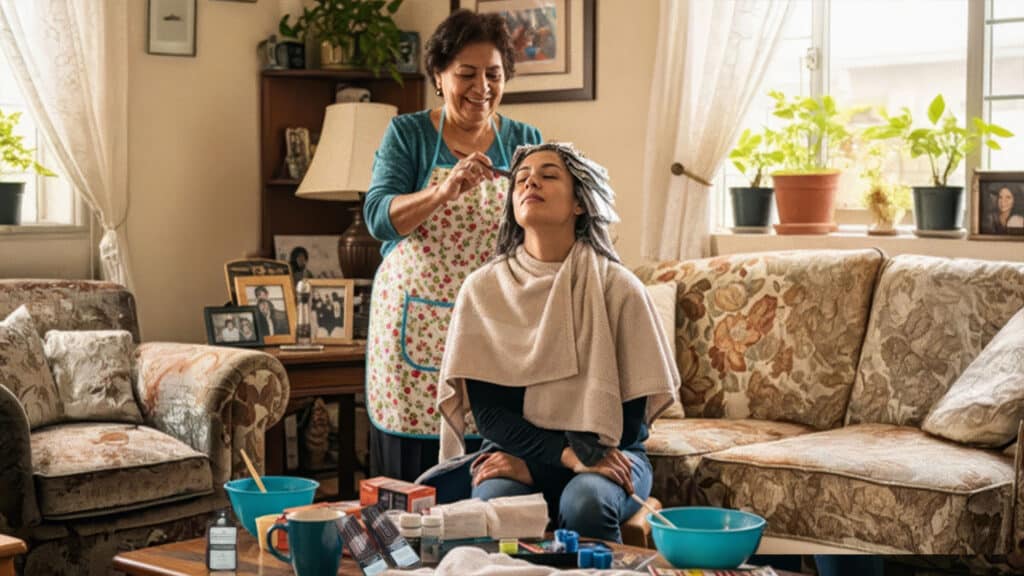‘Trends Come and Go—Style Shouldn’t’: Latina Thrifting Experts Share Their Best Tips for Shopping Secondhand
Retro trends, sustainability, a shift in consumer habits, and, more recently, tariff concerns have encouraged people to embrace vintage shopping. Beyond the aesthetic appeal of finding pieces from eras past and reinforcing personal style, thrifting has become an alternative to tackle environmental and ethical concerns. Giving a second life to clothing is also a way to reshape our style, rethink our purchases, and keep overconsumption in check.
Sustainably stylish
According to fashion and sustainability organizations, 92 million tonnes of garments end up in landfills every year. These figures are expected to reach 134 million by 2030. Fast fashion, reckless overconsumption, and throwaway culture have fueled the rapid increase in fashion waste.
While solving the problem requires complex action, circular practices like repairing, reviving, and recirculating items can contribute to environmental relief. “Thrifting is one of the most accessible ways to shop sustainably—you don’t need to be perfect to make a difference,” says Anisa Gutierrez, founder of the vintage seller and collector Fresa Thrift. “Choosing secondhand helps reduce textile waste, fights overproduction, and keeps clothes and items in use longer.”

Creativity Meets Circular Practices
In a market driven by passing trends and excess, thrifting helps people curate and personalize their wardrobes with one-of-a-kind items. “It supports creativity and individuality in a world of fast fashion and mass production,” Gutierrez explains. At Fresa Thrift, for example, she handpicks stylish items to bring personality and fun into people’s lives. “I’m here to show that secondhand can be stylish, sustainable, and full of soul […] because vintage should never be boring.”
Shopping secondhand can additionally provide people with options and alternatives across sizes, prices, and styles. That’s what inspired Marcy Guevara-Prete to launch The Plus Bus, a famed plus-size vintage shop in Los Angeles. “Lack of options and scarcity really drove the inception of The Plus Bus 10 years ago,” she tells FIERCE. “On the straight size, people have hundreds of stores to shop prom. Plus-size people have less than a handful.”
The Latina founder adds that participating in circular fashion is often rewarded with “amazing deals on pieces you may otherwise never have seen.”
Getting Started on Thrifting
While fascinating, embarking on a thrifting journey can be overwhelming. With social media thrusting pre-owned and secondhand clothing into the limelight, options have considerably expanded in recent years.
Guevara-Prete’s advice for thrifting beginners is to be open-minded. “You have to be willing to look hanger by hanger and sift through for those treasures,” she says. As she explains, although boutiques like hers are finely curated, shoppers still have to be willing to look through the racks and try things on. “It’s such a great feeling when you come upon something that is so special and you worked to find it.”
Be Patient and Have Fun!
Similarly, Gutierrez advises people to be patient and remember that “it takes time to develop your eye and vision.” Don’t be discouraged if you don’t find something right away. She says inventory is on rotation and constantly changing, so make sure to visit thrift shops regularly. You never know when you’ll come across a piece you can treasure and offer a second life to.
Find the Thrift Shops that Suit Your Needs
Janette Flores, co-owner of Vanjane LA, a showroom in DTLA Arts, which sources vintage clothing and offers rentals, advises finding the shops that best align with your preferences. “If you’re not one to have much patience in thrift shops that aren’t curated, I always recommend our favorite ‘BUY, SELL, TRADE’ shops all over the county,” says Flore. “It is a great alternative to thrifting since you can also bring your own clothing to trade in for something fresh.”
While Thrifting, Inspect the Items Thoroughly
Patience is truly the key to finding items and making sure they’re worth taking home. “Take your time, make sure you inspect the garment before you pay, and are comfortable with the wear or damages,” Guevara-Prete recommends. “I hate getting home and seeing that something was far more worn or damaged than when I saw it in the store. Don’t become blind to the trend, but try things on and inspect them.”
Go on Deal Days
If your budget is tight and you want to make the most of it, Gutierrez suggests doing your research beforehand. Many thrift shops operate on color tag sales or specific discount days. “Check ahead so you can stretch your budget and score more for less,” she says.
Check Every Aisle and Section
Another advice from Gutierrez and Guevara-Prete is not to skip any of the shop’s sections. Both agree that gems can be hiding anywhere, including menswear racks and home sections. “Don’t limit yourself to just your size or the women’s section,” Gutierrez tells FIERCE.
As Guevara-Prete explains, “You never know what you’ll find in the men’s or even kids’ sections.“
Just Remember to Avoid Excess While Thrifting
Whether you’re a beginner or a longtime thrifting enthusiast, these tips will help you find the best items and score great deals. However, don’t forget that sustainability is at the core of the thrifting experience. While it’s easy to get carried away, consider carefully whether something will be a valuable addition to your wardrobe or will simply end up discarded in your closet.
Instead of tapping into the same consumption patterns that encourage clothing waste, use thrifting to positively impact the environment, your finances, and your personal style.
As Flores highlights, trends come and go. “Discovering your own personal style through the secondhand market is something that cannot be replicated.”




